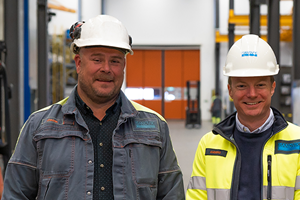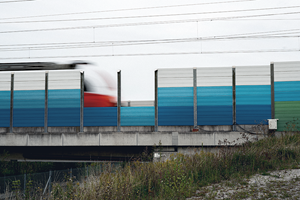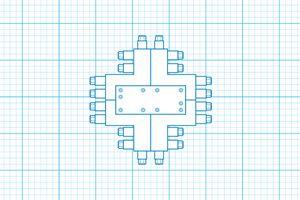
Can resilient infrastructure save us from disaster?
A growing number of both natural and man-made disasters are increasingly putting critical infrastructure under severe strain. Engineering can play an essential part in making it more resilient, benefiting societies around the world.
The International Disaster Database (EM-DAT) is not for the faint-hearted. It is an endless litany of human suffering, ecological catastrophes and economic sinkholes. The database lists and describes the occurrence and effects of more than 22,000 mass disaster globally, starting in 1900 and counting. There are natural disasters, including floods, typhoons, landslides, droughts, earthquakes, heat waves and wildfires.
There are also the “man-made” disasters, such as shipwrecks, plane crashes, fires and explosions as well as mine collapses and rail accidents. You will even find things like a disco stampede.
The number of disasters is growing
Unsurprisingly, given the abundance of disasters, there is an International Day for Disaster Risk Reduction. Organized by the United Nations to “promote risk-awareness and disaster reduction”, it has been celebrated yearly on October 13 since 1989.
In connection with this event in 2020, the United Nations Office of Disaster Risk Reduction (UNDRR) published the report Human cost of disasters: An overview of the last 20 years, 2000–2019. In the foreword, Mami Mizutori, Special Representative of the Secretary-General for Disaster Risk Reduction and Head of the UN Office for Disaster Risk Reduction, together with Debarati Guha-Sapir, Professor, Centre for Research on the Epidemiology of Disasters, Institute of Health and Society, UCLouvain, Belgium, write:
“We are twenty years into this new century, and disaster risk is taking on new shapes and sizes with every passing year. Disasters have never waited their turn, and increasingly risk is interconnected. Risk drivers and consequences are multiplying and cascading, colliding in unanticipated ways.”
Mizutori and Guha-Sapir continue: “While this report focuses primarily on the staggering rise in climate-related disasters over the last twenty years, it is also a commentary on the need to strengthen disaster risk governance for the entire range of natural hazards and man-made hazards including related environmental, technological and biological hazards and risks.”
Essential to strengthen disaster resilience
The climate-related disasters include meteorological, climatological or hydrological disasters. During the first two decades of the 21st century, these have all but doubled. The majority of the 7,348 reported disaster events were floods, followed by storms. The disasters are calculated to have caused 1.23 million deaths and affected some 4.03 million people. The estimated global economic losses were 2.97 trillion US dollars.
Along with UNDRR, many initiatives and organizations around the world are committed to turning this around. One example is the UN Sendai Framework for Disaster Risk Reduction 2015–2030.
It aims to “Prevent new and reduce existing disaster risks through the implementation of integrated and inclusive economic, structural, legal, social, health, cultural, educational, environmental, technological, political and institutional measures that prevent and reduce hazard exposure and vulnerability to disaster, increase preparedness for response and recovery, and thus strengthen resilience.”
Four priorities for action are outlined:
- Understanding disaster risk,
- Strengthening disaster risk governance to manage disaster risk,
- Investing in disaster reduction for resilience,
- Enhancing disaster preparedness for effective response, and to “Build Back Better” in recovery, rehabilitation and reconstruction.
While safeguarding human lives, livelihoods and health is the top priority, reducing disaster damage to critical infrastructure and services is also extremely important. Critical infrastructure holds society together
Critical infrastructure is the glue of modern society, holding it together and making it work. It is easy to imagine the utter chaos if we didn’t have functioning roads, railways, bridges, tunnels, water and wastewater management, or electrical grids. And imagine a world without access to the internet or telecommunications. How about that for disruptive potential?
The Resilience Shift — an initiative created by Lloyd’s Register Foundation and professional services firm Arup — states that, “More people than ever before depend on the critical services provided by infrastructure systems due to the growth of the world’s population and its transition from rural to urban areas. If any of these systems fail, consequences can be catastrophic for public safety and wellbeing, the environment and the economy.”
It is estimated that by 2050 almost 70 percent of the world’s population will live in cities. So, it is an escalating challenge.
The Resilience Shift points out that climate change and cyber-attacks also pose genuine threats, making it hard to predict or avoid shocks and stresses on critical infrastructure. “It is essential for infrastructure to be prepared for the threats we can anticipate, and to be able to respond to the unexpected so that it continues to provide the essential services on which society depends.”
Engineering plays a crucial part
Creating resilient infrastructure is a multifaceted area, including planning, financing, design, operation and maintenance. Various sub-disciplines of engineering – such as structural and mechanical engineering – can play a vital role in both creating and retrofitting safe, sustainable and resilient solutions. When planning and designing for critical infrastructure, engineering must take into account a broader perspective, from potential hazard to responding and adapting when disaster strikes to bouncing back in its aftermath.
The Resilience Shift advocates a shift “from thinking about infrastructure in terms of what it is, to what it does.” Subsequently, “Instead of creating fail-safe systems at specific design thresholds, we need to develop and operate systems, so they fail safely with limited consequences and recover quickly.”
A foundation for future generations
As we advance, engineers will play an increasingly important part in designing, producing and maintaining sustainable, safe and resilient critical infrastructure. In doing so, they will help create and safeguard the foundation of a well-functioning society for future generations. They will also contribute to sustainable development across the world.









